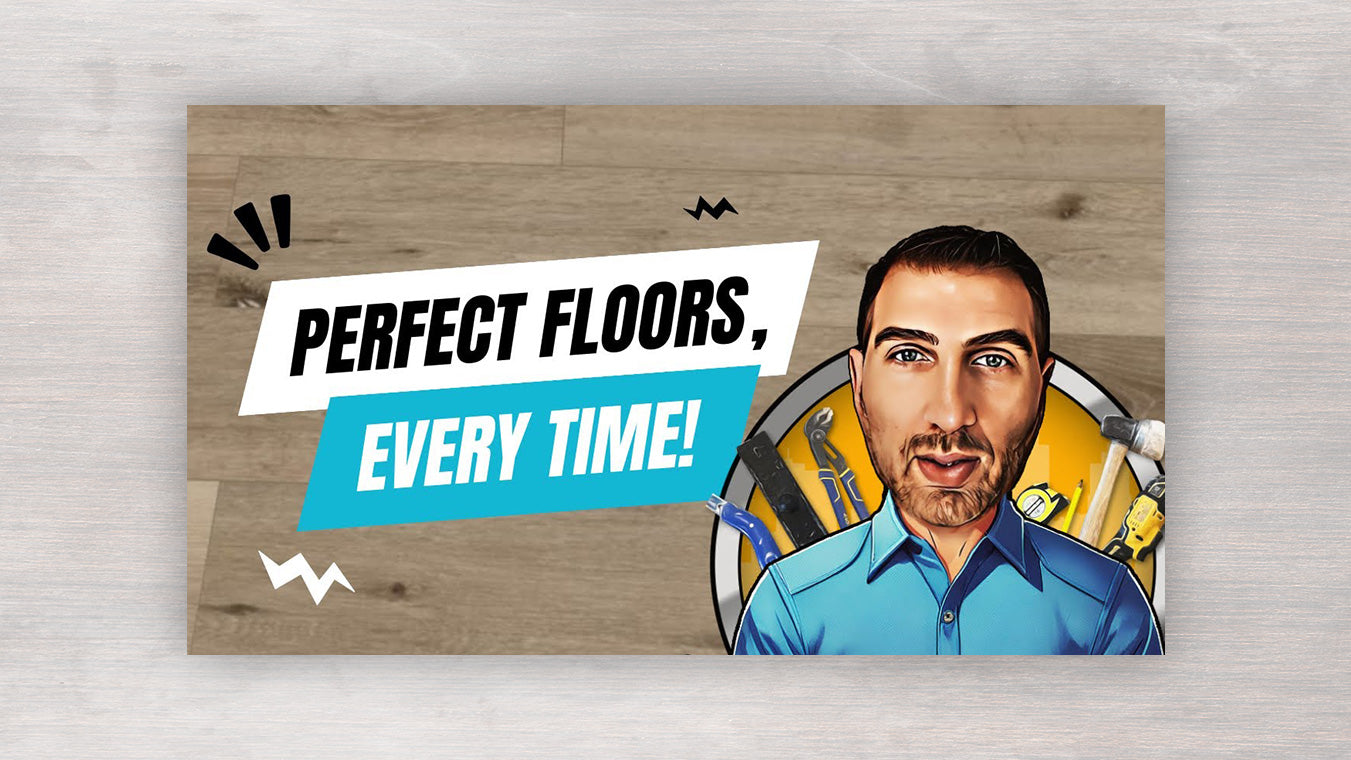
The Pro's Guide to Nailing Quarter Round: Tools, Tips, and Secrets from The Ultimate Flooring Guy
•Posted on May 19 2025
When it comes to perfecting a luxury vinyl plank (LVP) installation, few steps are more satisfying—and crucial—than properly installing quarter round. For many, it's the last detail that ties the whole project together. But get it wrong, and the whole room looks off. That's why I'm sharing this insider walkthrough from the job site to help you master quarter round installation using one of my favorite tools: the angled finish nailer.
Why It Starts with the Right Tool: The Angled Finish Nailer Advantage
One of the most valuable tools in my entire flooring arsenal is the 15-gauge 20V angled finish nailer. Why angled? Because it lets you reach tight corners and baseboard edges where straight nailers just can't go. Especially when you're installing quarter round on existing baseboards that might not be perfectly flush or level, angled nailers give you flexibility—and cleaner, more discreet nails.
Gone are the days of messy, gas-powered nailers. Today's models are battery-powered, fast, and clean. Just make sure you always have charged backup batteries on site. It may seem like a small step, but trust me—when you're halfway through a job and your nailer dies, you'll be grateful you planned ahead.
Quarter Round: Choosing Polystyrene for Seamless Results
In this job, I'm using polystyrene quarter round—and I swear by it. Why? Because it matches nearly any baseboard paint without the need for repainting. That alone is a huge time-saver. It's also more affordable than pine or PVC options—sometimes by up to $2 per 8-foot stick—and that savings adds up quick, especially for contractors working on volume projects.
Polystyrene doesn't cut as cleanly as wood, but if you master it, you'll love the results. Pro tip: always hollow out the back of your 45° cuts slightly to avoid interference when joining two pieces. Once nailed and caulked, the seams become virtually invisible.
How to Nail It Like a Pro
Before nailing, lay out all your quarter round across the job site. This lets you plan your cuts in advance and streamline your installation.
Then, as you prepare to nail each piece, remember:
-
Use 2-inch angled nails – they're long enough to catch studs or framing behind the baseboard.
-
Push the quarter round down firmly before and during nailing to ensure a snug fit to the flooring.
-
Space nails about 12 inches apart, unless you're dealing with a stubborn or warped section.
Holding the finish nailer with one hand while keeping the trim pressed to the floor with the other helps ensure a tight, even connection.
Mistakes Happen—That's What Caulk is For
Let's be honest: not every cut is perfect. Even seasoned pros like myself sometimes miss the mark. But that's where a good caulking job comes in. I've learned to master caulking just like flooring installation. It smooths over imperfections and makes everything look seamless.
A properly caulked quarter round will blend so well with the baseboard that you'd never know there was a cut underneath. It's one of those small touches that make a huge visual difference.
Pro Tip for Installers: Educate Your Clients
In this particular job, the client had already purchased the flooring before I arrived. While I'm always happy to work with what they provide, I'll be honest—I believe the Cali Vinyl flooring I sell is a superior product.
I've installed it for years without any callbacks. It's durable, beautiful, and backed by solid manufacturer warranties. Plus, because I work directly with Cali Vinyl, I can offer better pricing than big box stores like Lowe's or Home Depot.
If you're an installer, make sure your clients know their options. You might be able to save them money and deliver a better result—while earning more on your end through contractor pricing.
Ready to Upgrade Your Install Game?
Installing quarter round isn't just about hiding gaps—it's about showing off your craftsmanship. With the right tools, a bit of strategy, and a few pro-level tricks (like hollowed joints and precision caulking), you'll take your finish work to the next level.
Want access to better LVP pricing, tool recommendations, and tips like these delivered to your inbox? Visit www.theultimateflooringguy.com to learn more or reach out directly.